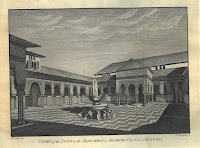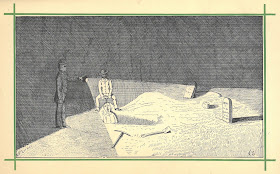In 1775, while the British colonists in America were in the midst of struggling to secure independence from Great Britain, English travel writer Henry Swinburne went on a Grand Tour of Spain with an English nobleman, Sir Thomas Gascoigne. Swinburne was from a Catholic family from Bristol and was very well connected on the Continent, to the extent that the Holy Roman Emperor Joseph II stood as godfather for one of their ten children. Gascoigne was a Catholic, a calculating politician (so much so that he later renounced his religion in service of his political ambitions), and a strong supporter of the American Revolution. He was also the sponsor for the two men's trip through Spain, which Swinburne had intended from the beginning to turn into a travel book.
Swinburne's eventual publication, Travels Through Spain in the Years 1775 and 1776, proved extremely popular at home, doubtless owing in part to the numerous large and beautiful engravings of
Moorish and ancient architecture that are interspersed throughout the sizable volume. However, despite these stunning images of Spain, our favorite portion of the book occurs before the narrative of the men's adventures even gets started. Between the preface and the first chapter, Swinburne includes an itinerary of the entire journey, listing the name of the town where they stayed, the inn or hostel that they stayed at, and the number of hours it took to reach each destination. The listing of inns is particularly enjoyable to read, because Swinburne spares no feelings in his blunt assessment of the quality of each boarding location. In Venta del Platero, along the Catalonian coast south of Barcelona, Swinburne stays at an inn that he judges to be "as bad as any in Spain." Another inn, in Venta del Golpe, is rated as "wretched." Although he doesn't hold back in his negative ratings, Swinburne does also give positive assessments as well: he decides that the Aquila d'Oro in Carthagena is "excellent," and of the Cavallo Blanco in Cadiz, he only cryptically states that it is "Italian," leaving the reader to infer his intended meaning.
To explore Spain through the eyes of Henry Swinburne, come to Rauner and ask to see Rare DP34 .S8 1779.


